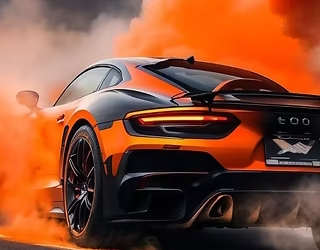Discovering Hanfu Dress: The Beauty of Traditional Chinese Clothing Through the Ages
The Hanfu dress, one of the most iconic symbols of Chinese heritage, reflects the essence of traditional Chinese clothing. Spanning thousands of years, Hanfu has witnessed the rise and fall of dynasties, societal transformation, and cultural evolution. From ancient emperors to modern-day cultural revivalists, Hanfu continues to captivate hearts with its elegance, historical richness, and artistic expression.
Origins of Hanfu: A Glimpse into the Past
Hanfu, meaning “Han people’s clothing,” traces its roots back to the Han Dynasty (206 BCE – 220 CE), though its origin predates this era. The term “Hanfu” is used to describe the traditional attire of the Han Chinese, the ethnic majority in China. Even before the Han Dynasty, similar styles were worn during the Shang and Zhou dynasties.
Hanfu was more than mere fashion—it was a symbol of identity, morality, and order. The structured, flowing robes represented the Confucian values of propriety and harmony. Over centuries, Hanfu evolved through the dynasties, with each period adding unique touches to fabric, patterns, and silhouette.
The Elements of Hanfu Dress
The traditional Chinese clothing Hanfu dress is defined by its unique structure, which differs from Western tailoring. Typically, Hanfu consists of several layers and components, each with specific meaning and purpose.
The most common components include:
- Yi (衣): The basic upper garment, often crossing over to the right and tied with sashes.
- Chang (裳): A long skirt or lower garment.
- Pao (袍): A full-length robe.
- Ruqun (襦裙): A popular style for women, consisting of a short blouse and long skirt.
- Shenyi (深衣): A one-piece robe commonly worn by scholars and officials.
The garment’s design favors flowing lines and generous cuts, allowing for graceful movement and draping. Colors, embroidery, and accessories such as belts, jade pendants, and headpieces further accentuate the beauty and individuality of each Hanfu ensemble.
Hanfu Through the Dynasties
The beauty of the Hanfu dress is that it evolved with the cultural and political shifts of different Chinese dynasties while maintaining its core identity.
Han Dynasty
During the Han Dynasty, Hanfu became standardized as court attire. Men and women wore robes with wide sleeves and sashes instead of buttons. Simplicity and modesty were emphasized, aligning with Confucian ideals.
Tang Dynasty
The Tang Dynasty is considered the golden age of Chinese culture and fashion. Hanfu during this period became more vibrant and expressive. Women often wore low-cut, wide-sleeved gowns with bold patterns and luxurious fabrics. The openness of the Tang society encouraged experimentation with form and style.
Song Dynasty
Song-era Hanfu returned to more conservative lines. The focus shifted to elegance and refinement. The clothing featured narrower sleeves, higher collars, and subtler colors. Embroidery became more detailed and artistic.
Ming Dynasty
The Ming Dynasty revived many ancient styles while enhancing them with structural precision. Ming Hanfu was characterized by a dignified appearance, with more elaborate sleeve cuffs and intricate woven patterns. The dragon robe, worn by the emperor, became a symbol of imperial authority.
Qing Dynasty and Decline
With the Manchu-led Qing Dynasty (1644–1912), Hanfu fell out of official favor. The ruling class introduced the qipao and changpao styles, which differed significantly from Hanfu. While Hanfu continued to be worn by the Han people in private or rural settings, it lost prominence in public and political life.
The Modern Revival of Hanfu
The 21st century has seen a cultural renaissance in China, and the Hanfu dress is at the heart of this revival. Young Chinese people, driven by a desire to reconnect with their heritage, are embracing Hanfu in daily life, festivals, and online communities.
Social media has played a crucial role in this resurgence. Influencers, historians, and enthusiasts share styling tips, historical insights, and photography, sparking global curiosity about traditional Chinese clothing Hanfu dress. Events like Hanfu Day and cultural festivals now attract large crowds who proudly showcase their traditional attire.
Cultural Significance and Symbolism
Wearing Hanfu is more than a fashion statement—it’s a way of honoring the past and preserving identity. Each stitch, pattern, and accessory has symbolic meaning. For example, phoenix motifs often symbolize feminine virtue and immortality, while dragon patterns represent power and divine rule.
Colors also convey cultural messages. Red is often associated with celebration and good luck, while black symbolizes solemnity and wisdom. The careful selection of these elements makes every Hanfu outfit a tapestry of cultural storytelling.
Global Interest in Hanfu
As China’s cultural influence expands, so does international interest in Hanfu. Museums, academic institutions, and fashion designers worldwide are studying and incorporating Hanfu elements into modern clothing. This global fascination stems from a growing appreciation for cultural diversity and sustainable fashion.
In cities like Paris, New York, and Tokyo, Hanfu has appeared on runways and in art exhibitions. Collaborations between Chinese artisans and international designers are further pushing the boundaries of how Hanfu can be reinterpreted for modern audiences.
Challenges and Misconceptions
Despite its rising popularity, Hanfu still faces challenges. Some people confuse Hanfu with other East Asian garments like the kimono or hanbok. Others mistakenly associate it solely with cosplay or fantasy rather than authentic tradition.
To preserve the authenticity of Hanfu, education is vital. Scholars and cultural advocates emphasize historical accuracy and respect for context. This ensures that Hanfu is recognized not just as a costume, but as a living symbol of Chinese civilization.
Hanfu in Contemporary Life
Today, Hanfu is finding its place in weddings, graduations, tea ceremonies, and even street fashion. Designers are adapting traditional silhouettes for practical, everyday use, blending ancient aesthetics with modern sensibilities.
Schools and universities have begun to include Hanfu in cultural curriculums. Meanwhile, craftsmen and artisans are reviving traditional weaving and embroidery techniques, breathing new life into ancient crafts.
Digital platforms are also helping to preserve and innovate Hanfu. Virtual try-ons, augmented reality filters, and educational apps allow more people to engage with traditional Chinese clothing Hanfu dress in interactive ways.
Conclusion
The Hanfu dress is more than a remnant of the past—it is a vibrant bridge between history and modernity. As a cornerstone of traditional Chinese clothing, Hanfu embodies the elegance, wisdom, and artistic spirit of Chinese culture. Through its flowing lines, symbolic designs, and enduring appeal, Hanfu continues to inspire new generations while honoring those who wore it before. This resurgence not only revitalizes an ancient legacy but also reminds the world of the enduring beauty of cultural heritage.
Ask ChatGPT



